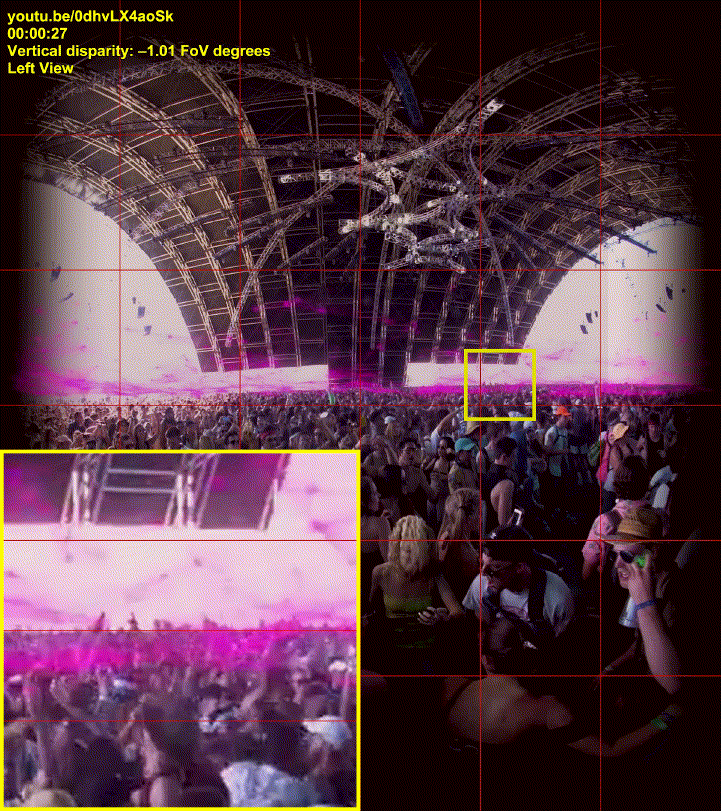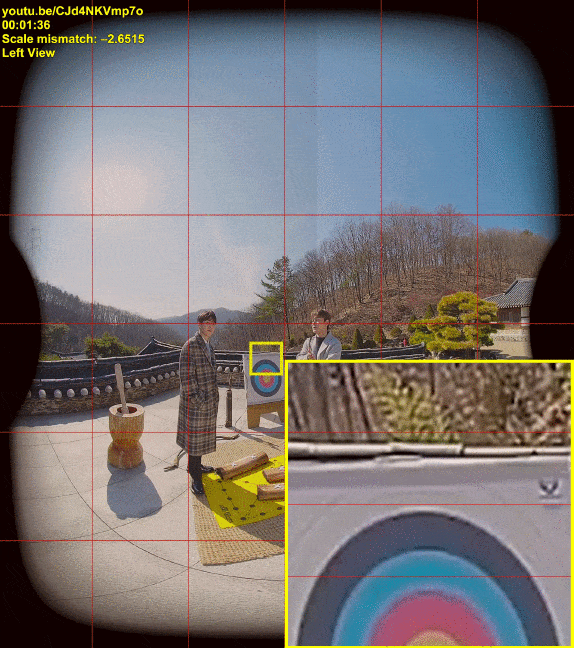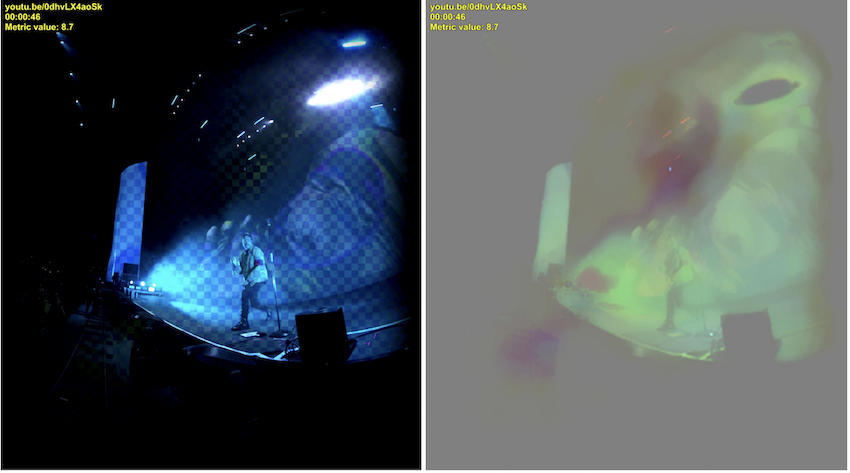Stereoscopic quality assessment of 1,000 VR180 videos using 8 metrics
S. Lavrushkin, I. Molodetskikh, K. Kozhemyakov, and D. Vatolin
Contact us:
Abstract
In this work we present a large-scale analysis of stereoscopic quality for 1,000 VR180 YouTube videos. VR180 is a new S3D format for VR devices which stores the view for only a single hemisphere. Instead of a multi-camera rig, this format requires just two cameras with fisheye lenses similar to conventional 3D-shooting, resulting in cost reduction of the final device and simplification of the shooting process. But as in the conventional stereoscopic format, VR180 videos suffer from stereoscopy-related problems specific to 3D shooting. In this paper we analyze videos to detect the most common stereoscopic artifacts using objective quality metrics, including color, sharpness and geometry mismatch between views and more. Our study depicts the current state of S3D technical quality of VR180 videos and reveals its overall poor condition, as most of the analyzed videos exhibit at least one of the stereoscopic artifacts, which shows a necessity for stereoscopic quality control in modern VR180 shooting.
Key Features
- Analysis of stereoscopic quality for 1,000 VR180 YouTube videos
- Analysis of Common 3D-Shooting Artifacts
- Estimation of the following stereoscopic parameters:
- Positive parallax;
- Negative parallax;
- Color mismatch;
- Vertical parallax;
- Rotation mismatch;
- Scale mismatch;
- Sharpness mismatch;
- Channel mismatch.
Dataset statistics
Below you can see VR180-video distribution by number of YouTube views and by duration (in seconds).

(a)View count.

(b) Duration.
Depth-budget analysis
This picture shows the average disparities of the closest and farthest objects in the videos we evaluated.
 Overall results relative to video release date.
Overall results relative to video release date.
Here you can see breakdowns of scene depth budget for each video. The x-axis represents the different videos, and the y-axis uses bars to represent how many shots in each video have a good, average or bad depth budget.
 Depth budget of scenes for each video.
Depth budget of scenes for each video.
Common 3D-Shooting Artifacts
For all 1,000 VR180 videos, we calculated scores for each geometric distortion: vertical shift, scale mismatch, rotation mismatch, color mismatch and sharpness mismatch. Some examples are presented below.

Vertical parallax

Scale mismatch

Rotation mismatch

Color mismatch
Report
Read full technical report based on our analysis. The report includes more than 300 pages with overall charts, S3D-artifact examples and video statistics.
Read all MSU Stereo Quality Reports on the main VQMT3D project page.
Cite us
@article{article,
author = {Lavrushkin, Sergey and Molodetskikh, Ivan and Kozhemyakov, Konstantin and Vatolin, Dmitriy},
year = {2021},
month = {01},
pages = {350-1},
title = {Stereoscopic quality assessment of 1,000 VR180 videos using 8 metrics},
volume = {2021},
journal = {Electronic Imaging},
doi = {10.2352/ISSN.2470-1173.2021.2.SDA-350}
}